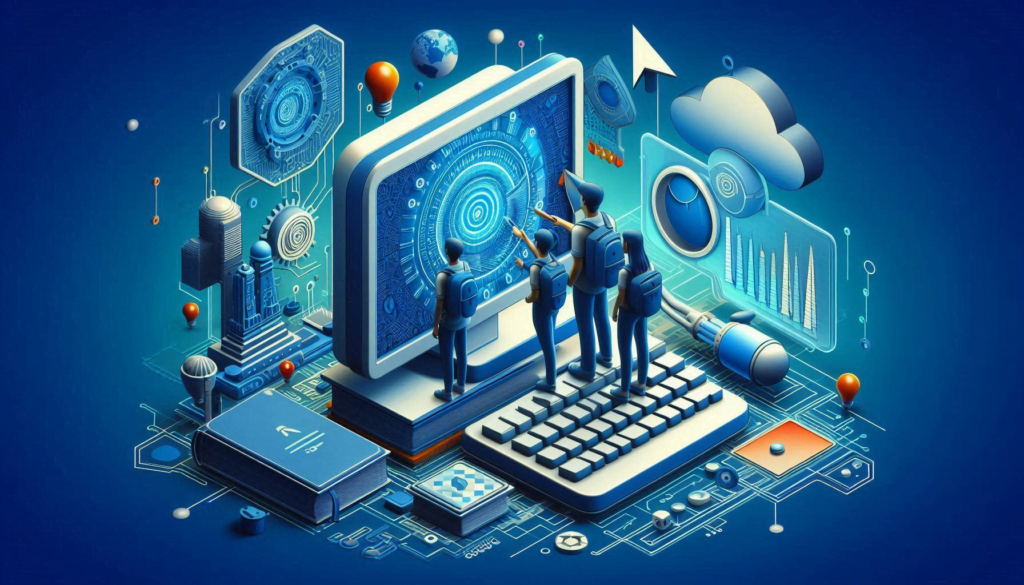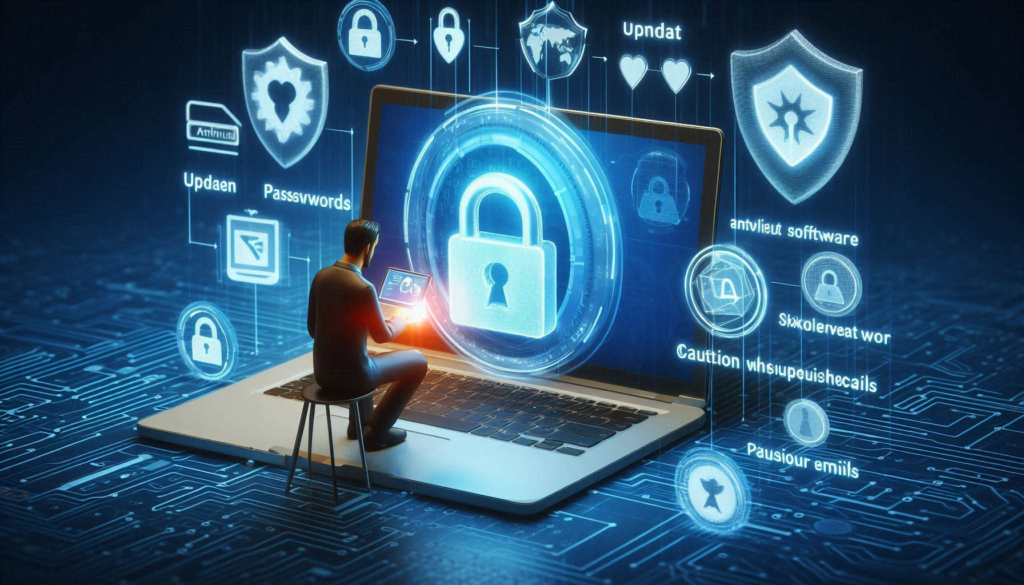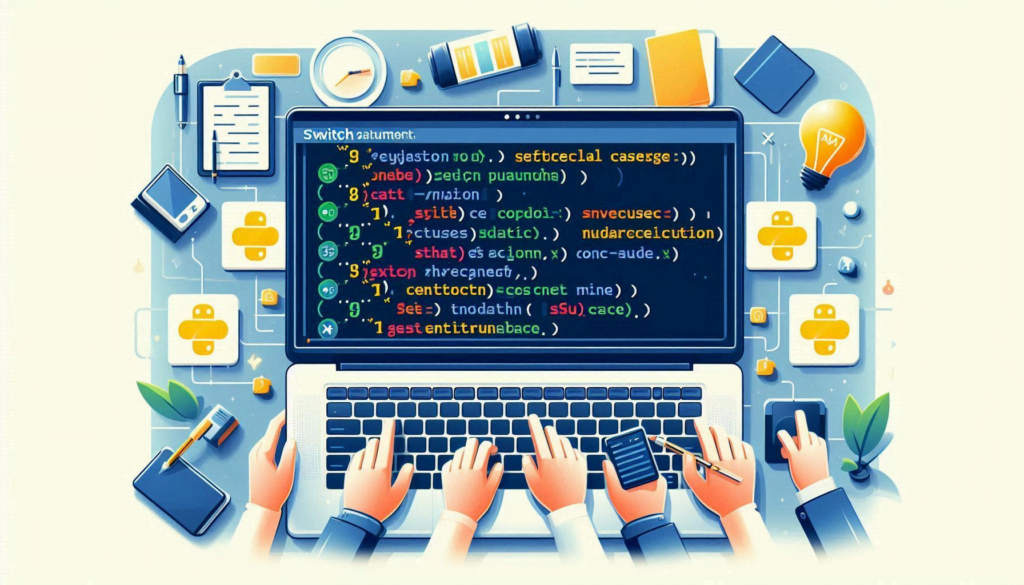Technology Moment In today’s fast-paced digital age, staying connected is more important than ever. As technology continues to evolve, access to reliable and high-speed internet is no longer a luxury but a necessity. The advent of 5G technology marks a significant leap forward, promising faster download speeds, lower latency, and more robust connectivity. For many, however, the cost of accessing these advancements can be prohibitive. Enter the era of free 5G government phones, a game-changer for bridging the digital divide and ensuring everyone has the opportunity to stay connected. In this article, we explore how these initiatives are transforming lives and what you need to know to take advantage of this incredible opportunity.
What Are Free 5G Government Phones?
In today’s digitally-driven society, staying connected isn’t just a luxury—it’s a necessity. Free 5G government phones are part of a government initiative aimed at ensuring that low-income individuals and families have access to modern communication tools. These phones, equipped with the latest 5G technology, are provided at no cost to eligible recipients, enabling them to stay in touch with family, friends, healthcare providers, and potential employers.
The primary objective of this program is to bridge the digital divide that exists between different socio-economic groups. By offering free 5G phones, the government is making a concerted effort to ensure that everyone, regardless of their financial situation, has access to the benefits of high-speed internet and advanced mobile technology. This initiative is crucial for fostering equal opportunities and promoting social inclusion in our increasingly interconnected world.
Importance of Staying Connected in Today’s World
The importance of staying connected in today’s world cannot be overstated. From personal communication to professional opportunities, having access to a reliable mobile device is essential. Here are a few key reasons why connectivity is so crucial:
- Emergency Situations: Having a mobile phone allows individuals to contact emergency services quickly and efficiently. In times of crisis, a reliable phone can be a lifesaver.
- Healthcare Access: Many healthcare providers now offer telehealth services, enabling patients to consult with doctors and receive medical advice without having to travel.
- Educational Opportunities: With the rise of online learning, having access to the internet and a capable device is vital for students of all ages. Free 5G government phones can help bridge the gap for students who might otherwise be left behind.
- Employment Opportunities: Job searching, applications, and remote work opportunities often require a reliable internet connection and a modern device. Providing these tools to low-income individuals can significantly enhance their chances of securing employment.
- Social Inclusion: Staying connected with family and friends is important for mental health and well-being. Free 5G government phones help individuals maintain their social connections, reducing feelings of isolation.
Table of Contents
The Evolution of Government Assistance Programs
Government assistance programs have a rich history of evolving to meet the changing needs of society, particularly in the realm of communication. The introduction of free 5G government phones represents the latest development in a long line of initiatives aimed at ensuring that everyone, regardless of their financial situation, has access to essential communication services. Let’s delve into this evolution to understand how we arrived at the era of 5G government phones.
From Lifeline to 5G: A Brief History
The journey began with the Lifeline program, which was established in 1985 during the Reagan administration. The primary goal of Lifeline was to provide affordable telephone service to low-income households, recognizing that access to communication is crucial for safety, job opportunities, and overall quality of life. Initially, Lifeline offered discounts on landline telephone services, making it possible for millions of Americans to stay connected.
As technology advanced, so did the scope of the Lifeline program. By the mid-2000s, mobile phones had become ubiquitous, and the program adapted to include wireless services. This shift was significant as it acknowledged the growing importance of mobile communication in daily life. The expansion to wireless services allowed beneficiaries to stay connected on the go, enhancing their ability to communicate in emergencies, stay in touch with family and friends, and access essential services.
The Introduction of Broadband
The next major leap came in 2016 when the Federal Communications Commission (FCC) voted to expand Lifeline to include broadband internet services. This decision was a response to the increasing importance of internet access for educational purposes, job searching, healthcare, and more. The inclusion of broadband aimed to bridge the digital divide, ensuring that low-income households could participate fully in the digital economy and society.
Why 5G Matters: The Technological Leap
Now, we are witnessing the transition to 5G technology, which promises even greater connectivity and faster internet speeds. The inclusion of 5G in government assistance programs is a recognition of its potential to revolutionize communication and access to information. Here’s why 5G is a significant technological leap:
- Speed and Efficiency: 5G networks offer much faster data speeds compared to previous generations. This means quicker downloads, smoother streaming, and more efficient use of time-sensitive applications.
- Low Latency: 5G significantly reduces latency, which is the delay before a transfer of data begins following an instruction. This is crucial for applications that require real-time responses, such as telemedicine, online gaming, and remote work.
- Capacity and Connectivity: 5G can support a much higher number of devices within a given area, making it ideal for densely populated urban areas and smart cities. This increased capacity ensures that more people can stay connected simultaneously without network slowdowns.
- Innovation and New Services: 5G technology is expected to drive innovation across various sectors, including healthcare, transportation, education, and entertainment. For instance, it can enable advanced telehealth services, autonomous vehicles, and immersive virtual reality experiences.
The Future of Government Assistance Programs
The integration of 5G technology into government assistance programs marks a forward-thinking approach to public welfare. It reflects an understanding that access to cutting-edge communication technology is no longer a luxury but a necessity. As society continues to advance, these programs will likely evolve further to incorporate new technologies and address emerging needs.
Who Qualifies for a Free 5G Government Phone?
Getting a free 5G government phone can be a game-changer, but not everyone qualifies. Understanding the eligibility criteria is essential to know if you or someone you know can benefit from this program. Here’s a detailed look at who qualifies:
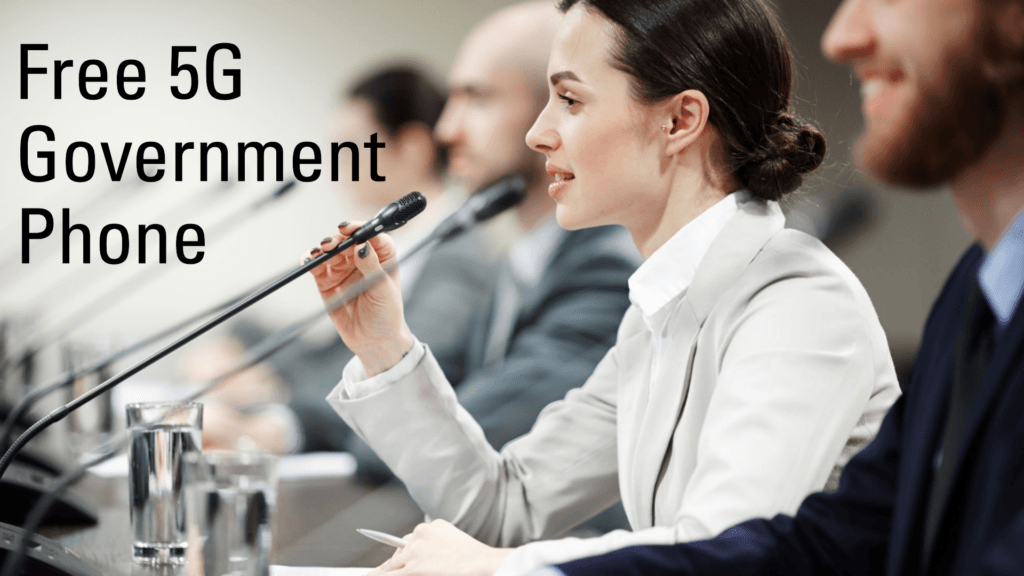
Eligibility Criteria
The primary eligibility for free 5G government phones is typically based on participation in federal assistance programs or meeting certain income requirements. Here’s a breakdown:
- Participation in Federal Assistance Programs: If you or someone in your household participates in certain federal assistance programs, you may qualify for a free 5G government phone. Common qualifying programs include:
- Supplemental Nutrition Assistance Program (SNAP): This program, also known as food stamps, helps low-income individuals and families buy food.
- Medicaid: Provides health coverage to low-income individuals and families.
- Federal Public Housing Assistance (FPHA): Also known as Section 8, it helps low-income families, the elderly, and the disabled afford decent and safe housing.
- Veterans Pension and Survivors Benefit: Financial support for low-income veterans and their families.
- Tribal Programs: Various programs for Native American communities, such as Tribal Head Start and the Bureau of Indian Affairs General Assistance.
- Income Requirements: If you don’t participate in any of the above programs, you may still qualify based on your income. Typically, your household income must be at or below 135% of the Federal Poverty Guidelines. These guidelines are adjusted annually and vary based on the size of your household and your state.
Other Qualifying Programs
In addition to federal assistance programs and income requirements, there are other ways to qualify:
- School Lunch Programs: Participation in the National School Lunch Program (NSLP) or the School Breakfast Program (SBP) can qualify a household for a free 5G government phone.
- Low-Income Home Energy Assistance Program (LIHEAP): This program helps low-income families with energy costs and can be a qualifying criterion.
- Temporary Assistance for Needy Families (TANF): Provides temporary financial assistance to families in need and can help qualify for the program.
Proof of Eligibility
When applying for a free 5G government phone, you’ll need to provide proof of eligibility. This might include:
- Documentation from a Federal Assistance Program: For example, a benefits statement or an official letter showing your participation in SNAP or Medicaid.
- Income Proof: Pay stubs, a tax return, or an official letter that verifies your household income.
Application Process
- Find a Provider: Look for participating carriers that offer free 5G government phones in your area.
- Submit an Application: This can usually be done online, by mail, or in-person at a provider’s store.
- Provide Required Documentation: Upload or submit the necessary documents that prove your eligibility.
- Wait for Approval: The provider will review your application and notify you of their decision. If approved, you’ll receive your free 5G phone.
Top Providers of Free 5G Government Phones
When it comes to accessing free 5G government phones, several major carriers and service providers play a crucial role. These providers partner with government assistance programs to offer eligible individuals access to the latest technology, ensuring they stay connected in our increasingly digital world. Here’s a closer look at some of the top providers and what they offer:
Major Carriers Participating
- T-Mobile
- Overview: T-Mobile is one of the leading participants in providing free 5G government phones. Known for its extensive 5G network coverage, T-Mobile offers robust connectivity solutions to eligible users.
- Services Offered: T-Mobile provides free phones with a range of features, including high-speed data, unlimited talk and text, and access to their expansive 5G network.
- Application Process: The application for a free phone through T-Mobile involves verifying eligibility through their Lifeline program and can be done online or at authorized retail locations.
- AT&T
- Overview: AT&T is another major carrier offering free 5G government phones. With a strong presence nationwide, AT&T ensures that users have access to reliable and fast 5G services.
- Services Offered: AT&T’s free phone plans typically include unlimited talk and text, a set amount of data each month, and access to their widespread 5G network.
- Application Process: Users can apply through AT&T’s Lifeline program by submitting proof of eligibility and completing the application process online or in-store.
- Verizon
- Overview: Verizon’s participation in the free 5G government phone program underscores its commitment to connecting underserved communities.
- Services Offered: Verizon offers free 5G phones that come with various benefits, including unlimited talk, text, and data packages designed to meet basic connectivity needs.
- Application Process: The application can be initiated online through Verizon’s Lifeline page, requiring documentation that proves eligibility.
Coverage and Services Offered
- Network Coverage: All the major carriers, including T-Mobile, AT&T, and Verizon, provide extensive 5G network coverage. This ensures that users in both urban and rural areas have access to high-speed internet, which is essential for various daily activities such as remote work, online education, and telehealth services.
- Plan Details: The plans offered usually include unlimited talk and text, a certain amount of high-speed data, and access to additional services like voicemail, caller ID, and hotspot capabilities.
- Additional Services: Some providers also offer additional services such as customer support in multiple languages, easy access to emergency services, and assistance for users with disabilities.
Comparison of Providers
- Network Reliability: While all three major providers offer reliable 5G networks, Verizon is often praised for its network reliability and speed, particularly in urban areas. T-Mobile and AT&T also offer strong networks, with T-Mobile known for its widespread 5G coverage.
- Data Allowances: The amount of high-speed data included in the plans can vary. T-Mobile tends to offer generous data packages, while AT&T and Verizon provide competitive but slightly more limited data allowances.
- Ease of Application: The application processes for these programs are quite similar across providers, involving proof of eligibility and an online or in-store application. However, T-Mobile is often highlighted for its straightforward and user-friendly application process.
Benefits of Free 5G Government Phones
The advent of 5G technology marks a significant leap forward in mobile communications, promising faster speeds, lower latency, and improved connectivity. Free 5G government phones bring these advantages to individuals who might otherwise be unable to afford them.
1. Enhanced Connectivity: 5G technology dramatically improves internet speeds, offering downloads and uploads at lightning speed compared to 4G. This means users can stream high-definition videos, participate in video calls, and download large files without frustrating delays. Enhanced connectivity facilitates smoother online experiences, which is crucial for staying in touch with loved ones, accessing entertainment, and utilizing various online services.
2. Access to Emergency Services: Having a reliable phone with 5G capabilities ensures that users can quickly contact emergency services when needed. Faster and more reliable connectivity can be life-saving in critical situations, providing access to emergency responders, healthcare services, and other vital resources. Additionally, many free 5G government phones come pre-installed with emergency apps and features that enhance safety and security.
3. Bridging the Digital Divide: The digital divide refers to the gap between those who have easy access to digital technologies and the internet and those who do not. Free 5G government phones help bridge this divide by providing high-speed internet access to low-income individuals and families. This connectivity is essential for educational purposes, job searching, remote work, and accessing government services online. By leveling the playing field, these phones empower individuals to participate more fully in the digital economy and society.
4. Educational Opportunities: With a 5G-enabled device, students can access online learning platforms, digital textbooks, and virtual classrooms. This is particularly important in areas where educational resources are scarce or schools have shifted to hybrid or remote learning models. The enhanced speeds and reliability of 5G ensure that students can participate in live classes, submit assignments, and collaborate with peers without technical hindrances.
5. Economic Empowerment: Access to a 5G phone can significantly impact an individual’s economic prospects. High-speed internet allows users to search for jobs, submit applications, and even work remotely. Gig economy opportunities, such as ride-sharing and delivery services, become more accessible with reliable connectivity. For entrepreneurs and small business owners, 5G technology facilitates better communication with customers, suppliers, and employees, thus enhancing business operations.
6. Health and Wellness : Telehealth services have become increasingly important, especially in remote or underserved areas. Free 5G government phones enable users to connect with healthcare providers through video calls, access online health resources, and receive medical advice without having to travel long distances.
7. Social Inclusion: In today’s connected world, social interactions often occur online. Free 5G government phones help individuals stay connected with friends and family through social media, messaging apps, and video calls. This connectivity is vital for mental health and emotional well-being, especially for those who may feel isolated or disconnected from their communities.
8. Access to Government Services: Many government services are now accessible online, including filing taxes, applying for benefits, and accessing public records. With a 5G phone, individuals can easily navigate these services, ensuring they receive the assistance and information they need. This can be particularly beneficial for those who live in rural areas where in-person access to government offices may be limited.
9. Entertainment and Information: A 5G-enabled phone opens up a world of entertainment options, from streaming movies and music to playing online games. Additionally, users can stay informed with real-time news updates and access a wealth of information online. This can improve quality of life by providing relaxation and leisure activities, as well as keeping individuals informed about current events.
10. Environmental Impact: While it might not be immediately obvious, 5G technology can also contribute to environmental sustainability. Improved connectivity and efficiency can lead to smarter use of resources, such as reduced energy consumption in communication networks. Additionally, programs that recycle or repurpose older phones when distributing new 5G devices help reduce electronic waste.
Common Misconceptions About Free 5G Government Phones
Debunking Myths
- “Free 5G Government Phones Are Low-Quality Devices”
- Many people assume that because these phones are free, they must be outdated or of inferior quality. However, the reality is that many of these phones are modern smartphones equipped with the latest technology. Providers understand that reliable and efficient devices are crucial for users to fully benefit from 5G connectivity.
- “The Service Is Poor and Unreliable”
- Another myth is that the service provided with these phones is subpar, with limited coverage and frequent outages. In reality, the service is often provided by major carriers that offer extensive nationwide coverage. Users typically have access to the same network reliability as paying customers, ensuring they can stay connected without issues.
- “It’s Just a Government Handout with No Real Benefit”
- Some people view the program as merely a government handout with no substantial benefits. However, free 5G government phones provide significant advantages, such as access to emergency services, job opportunities, healthcare resources, and educational tools. These benefits help individuals improve their quality of life and become more self-sufficient.
Addressing Stigmas
- “Using a Free 5G Government Phone Is Embarrassing”
- Some individuals feel embarrassed or stigmatized for using a government-provided phone, worrying that others might judge them for needing assistance. It’s important to recognize that these programs exist to support those in need, and there is no shame in utilizing resources designed to help. Access to a reliable phone is essential for everyone, regardless of their financial situation.
- “Recipients Are Taking Advantage of the System”
- There is a stigma that recipients of free 5G government phones are abusing the system. In reality, strict eligibility criteria and documentation requirements ensure that only those who genuinely need assistance receive these phones. The program aims to help individuals and families who are struggling to afford basic communication services.
Future of Free 5G Government Phones
As technology continues to advance at a rapid pace, the future of free 5G government phones looks both promising and transformative. Here are several key areas where we can expect to see significant developments:
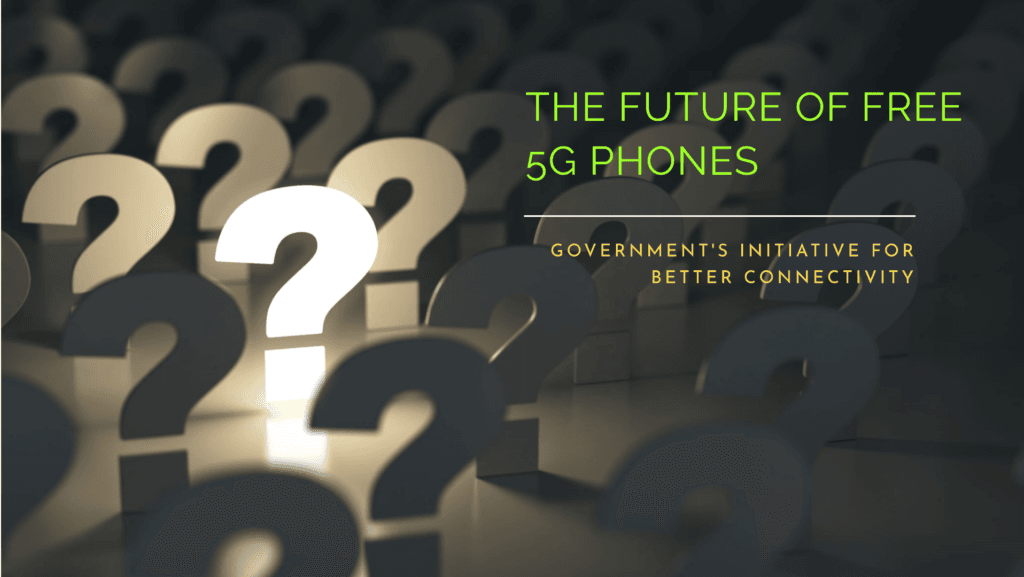
1. Expanded Accessibility and Reach: The primary goal of free 5G government phones is to ensure that everyone, regardless of their economic status, has access to the latest communication technology. In the future, we can expect these programs to expand their reach even further, covering more remote and underserved areas. This expansion will be crucial in bridging the digital divide and ensuring that more people can benefit from high-speed internet access.
2. Enhanced Technology Integration: As 5G technology continues to evolve, we can anticipate that free government phones will incorporate more advanced features. This could include improved security measures, better battery life, enhanced cameras, and integration with other smart devices. These advancements will make free 5G phones not just a means of communication, but a central hub for various aspects of daily life.
3. Greater Support for Education and Employment: The future of free 5G government phones will likely place a stronger emphasis on supporting education and employment opportunities. With high-speed internet access, individuals will have better opportunities to participate in online learning, job training programs, and remote work. This could lead to greater economic mobility and improved quality of life for many.
4. Enhanced Healthcare Access: Free 5G government phones can play a vital role in providing access to telehealth services, allowing individuals to consult with healthcare professionals remotely. This can be particularly beneficial for those in rural or underserved areas where medical facilities are scarce.
5. Increased Collaboration with Private Sector: The future of free 5G government phones will likely involve more collaboration between the government and private sector companies. By working together, they can leverage their respective strengths to provide better services and more innovative solutions. This collaboration could result in better coverage, more affordable devices, and enhanced customer support.
6. Focus on Sustainability: As environmental concerns become more pressing, the future of free 5G government phones will likely include a focus on sustainability. This could involve the use of eco-friendly materials, energy-efficient technologies, and programs to recycle or repurpose old devices. Such initiatives will help reduce the environmental impact of widespread mobile phone usage.
7. Adapting to Emerging Technologies: As new technologies emerge, free 5G government phones will need to adapt to stay relevant. This could include integration with the Internet of Things (IoT), augmented reality (AR), virtual reality (VR), and artificial intelligence (AI). By staying at the forefront of technological advancements, these programs can continue to provide valuable services to their users.
8. Policy and Regulatory Changes: The future of free 5G government phones will also be shaped by policy and regulatory changes. Governments may introduce new regulations to ensure fair access, protect user privacy, and promote competition among service providers. Keeping abreast of these changes will be essential for the continued success and improvement of these programs.
Conclusion
In the conclusion of your article, you want to summarize the key points discussed, reinforcing the importance and impact of free 5G government phones while also looking forward to future developments. Here’s how to approach it:
Start by briefly summarizing the main sections of the article. This includes the evolution of government assistance programs, eligibility criteria for free 5G phones, the application process, and the benefits and challenges associated with these phones. A concise recap helps reinforce the information for the reader and ties all the discussed points together.
Emphasize the significance of free 5G government phones in today’s digital age. Highlight how they bridge the connectivity gap for underserved communities, enhance access to essential services, and contribute to closing the digital divide. Remind readers that these programs are not just about providing a phone, but about empowering individuals and families with better communication tools.
Discuss the future of government assistance programs and 5G technology. Mention any potential improvements or expansions in the program that could make it even more beneficial. Consider speculating on how advancements in technology might further enhance these programs or introduce new opportunities for those in need.
FAQs – Frequently Asked Questions
What are free 5G government phones?
Free 5G government phones are mobile devices provided at no cost by government programs to eligible low-income individuals and families. These phones are equipped with 5G technology, allowing for faster internet speeds and better connectivity compared to older 4G devices. The goal of these programs is to ensure that everyone has access to modern communication tools, especially those who may not be able to afford them otherwise.
Who qualifies for a free 5G government phone?
Eligibility for free 5G government phones typically depends on several factors, including income level, participation in certain federal assistance programs, or other criteria set by the provider. Common qualifiers include households receiving benefits from programs like SNAP (Supplemental Nutrition Assistance Program), Medicaid, or SSI (Supplemental Security Income). Each program may have its specific guidelines, so it’s essential to check with the relevant authorities or service providers.
How do I apply for a free 5G government phone?
To apply for a free 5G government phone, you generally need to follow a few steps. First, you must verify your eligibility by checking the requirements set by the program or provider. Next, gather the necessary documentation, such as proof of income or enrollment in qualifying assistance programs. Then, complete the application form either online or by mail, depending on the provider’s process. Some programs may also offer assistance through community organizations or service centers.
Which carriers offer free 5G government phones?
Several major carriers participate in government programs that provide free 5G phones. These carriers typically include large network providers like Verizon, AT&T, T-Mobile, and Sprint. Each carrier may offer different models of phones and varying levels of service, so it’s a good idea to compare the options available in your area to find the best fit for your needs.
What are the benefits of receiving a free 5G government phone?
Receiving a free 5G government phone offers several benefits. Enhanced connectivity is a major advantage, as 5G technology provides faster internet speeds and better performance, which can improve your overall communication experience. Additionally, these phones often come with access to emergency services and apps that can help bridge the digital divide, making technology more accessible to everyone.
Are there any downsides or limitations to free 5G government phones?
While free 5G government phones provide valuable assistance, there can be some limitations. These phones may have restrictions on data usage or may come with limited features compared to higher-end models. Additionally, the availability of 5G coverage can vary by location, which might affect service quality. It’s also important to be aware of any potential privacy concerns or user agreements associated with these devices.
Can I upgrade my free 5G government phone or switch providers?
Upgrading your free 5G government phone or switching providers may be possible, but it often depends on the specific terms of the program you’re enrolled in. Some programs may allow upgrades after a certain period, while others may have restrictions. Switching providers can also be complex, as it might require reapplying or meeting additional criteria. It’s best to contact your current provider or the program’s support service for detailed information.
What should I do if I have issues with my free 5G government phone?
If you encounter problems with your free 5G government phone, you should first contact the customer support service of your phone provider or the organization managing the program. It’s helpful to document any issues and keep records of your communications with the support team to ensure a smooth resolution process.

